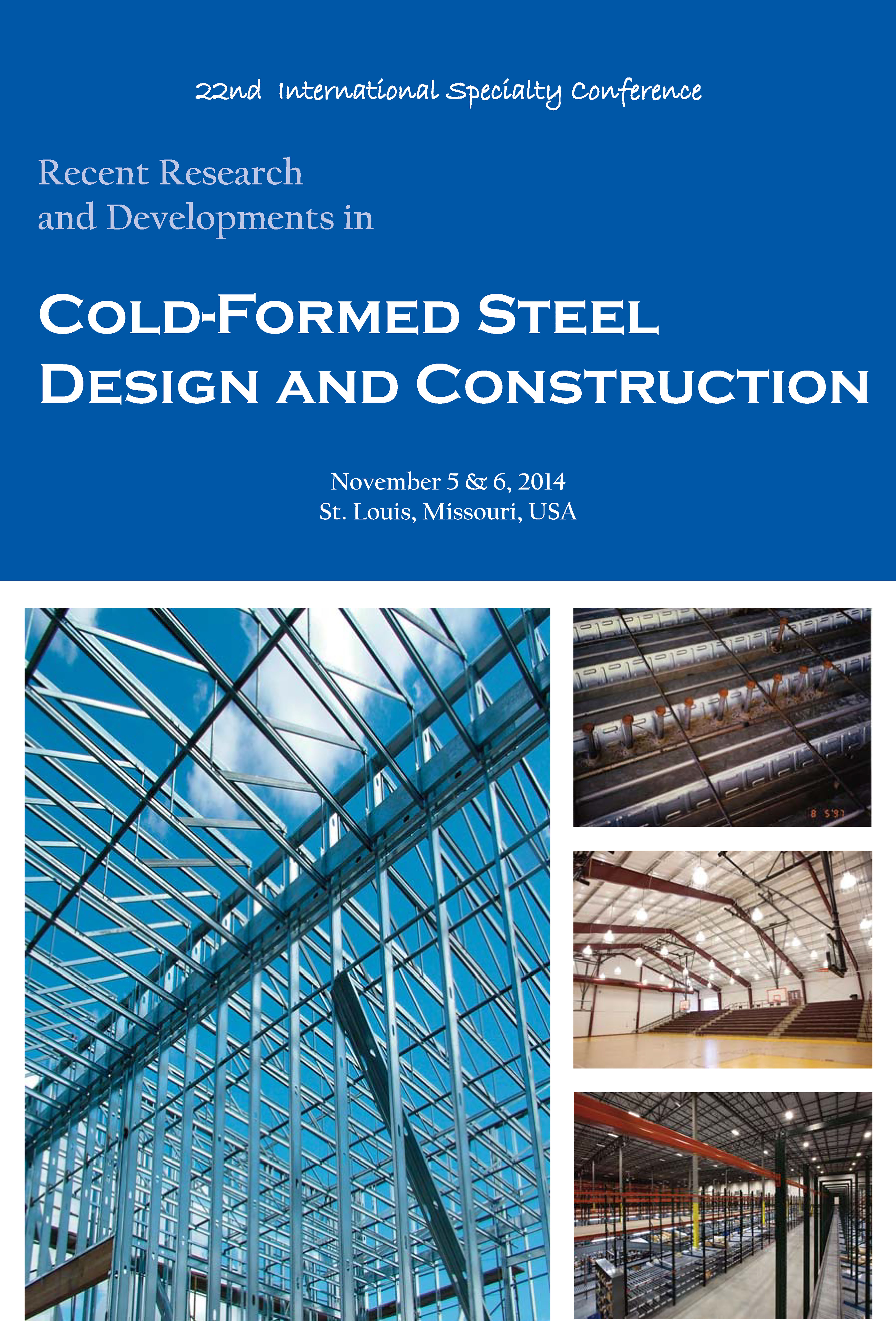Session Dates
05 Nov 2014
Abstract
The effects of end boundary conditions on the compressive load carrying capacity of cold-formed lipped channel sections with perforations are investigated and discussed. Most structural cold-formed steel members are typically manufactured with perforations. These perforations are pre-cut to accommodate electrical, plumbing, and heating services and so on. Due to the size, shape, and position of perforations and end conditions, ultimate strength and elastic stiffness of a structural member can be varied. This paper describes the ultimate strength results obtained from numerical, experimental, and theoretical investigations for two types of end conditions namely, flat-end and fixed-fixed. The numerical results given have been obtained using the ANSYS FEA software package. An experimental study of the buckling behaviour of lipped channel columns of same cross-section, but with different perforation shapes and end conditions is reported and the findings from this are used to validate numerical results; good correlation was obtained both with ultimate strength and failure modes. Further, the study showed that there are similar ultimate load values for corresponding compression members under flat-end and fixed-fixed end conditions, and in general, more conservative estimates of design rule predictions: AISI Specification, British Standard - BS 5950 Part 5, and Eurocode 3.
Department(s)
Civil, Architectural and Environmental Engineering
Research Center/Lab(s)
Wei-Wen Yu Center for Cold-Formed Steel Structures
Meeting Name
22nd International Specialty Conference on Cold-Formed Steel Structures
Publisher
Missouri University of Science and Technology
Document Version
Final Version
Rights
© 2014 Missouri University of Science and Technology, All rights reserved.
Document Type
Article - Conference proceedings
File Type
text
Language
English
Recommended Citation
Macdonald, Martin and Kulatunga, Muditha P., "The Effects of End Conditions on the Load Capacity of Cold-Formed Steel Column Members of Lipped Channel Cross-Section with Perforations Subjected to Compression Loading" (2014). CCFSS Proceedings of International Specialty Conference on Cold-Formed Steel Structures (1971 - 2018). 2.
https://scholarsmine.mst.edu/isccss/22iccfss/session02/2
The Effects of End Conditions on the Load Capacity of Cold-Formed Steel Column Members of Lipped Channel Cross-Section with Perforations Subjected to Compression Loading
The effects of end boundary conditions on the compressive load carrying capacity of cold-formed lipped channel sections with perforations are investigated and discussed. Most structural cold-formed steel members are typically manufactured with perforations. These perforations are pre-cut to accommodate electrical, plumbing, and heating services and so on. Due to the size, shape, and position of perforations and end conditions, ultimate strength and elastic stiffness of a structural member can be varied. This paper describes the ultimate strength results obtained from numerical, experimental, and theoretical investigations for two types of end conditions namely, flat-end and fixed-fixed. The numerical results given have been obtained using the ANSYS FEA software package. An experimental study of the buckling behaviour of lipped channel columns of same cross-section, but with different perforation shapes and end conditions is reported and the findings from this are used to validate numerical results; good correlation was obtained both with ultimate strength and failure modes. Further, the study showed that there are similar ultimate load values for corresponding compression members under flat-end and fixed-fixed end conditions, and in general, more conservative estimates of design rule predictions: AISI Specification, British Standard - BS 5950 Part 5, and Eurocode 3.



